For decades, management science has concerned itself with researching and developing sophisticated systems for understanding and unleashing employee motivation. In organizations, we’ve experimented with countless combinations of possible solutions to arrive at that magical motivational mix. We’ve tried:
- Compensation, bonuses, and different takes on doling out the almighty dollar to inspire employees
- Recognition in a variety of flavors, including verbal reinforcement, physical tokens and reminders, and exotic trips
- Team structures that support relationships and greater autonomy
- Enticing work spaces (because what says ‘motivation’ more than a pool table and hanging out with Fido from 9 to 5?)
- Flexible schedules and remote working opportunities
Is it possible that we’ve over-engineered a complex solution to a simple problem? Is it possible that it’s a lot more organic and more altruistic than all of this? Is it possible that motivation can be enhanced and even optimized simply by helping others connect their work with the value it brings to others? Recent research suggests an emphatic “yes,” “yes,” and “yes.”
The altruistic angle
Adam Grant, the Wharton professor and author of “Give and Take,” offers considerable evidence that making the connection between work and the value it brings to others activates motivation.
In his scholarship call-center experiment, time on the phone increased by 142% and revenues grew by 171% to 400% after the callers met those benefiting from the scholarships for which they were raising funds. In another study, Grant determined that positioning healthcare provider hand-washing in terms of benefits to the patient (versus benefits to the providers) triggered a 33% increase in the volume of product used and 10% increase in compliance.
Mine the motive
These studies suggest that as humans we may be intrinsically motivated to serve and bring value to others. If that’s the case (or if you want to believe that it’s the case and conduct your own field studies to confirm it), then it behooves leaders to explore four strategies that may tap into this altruism and activate a service/value/motivation loop.
- Make it personal. Let employees see, hear, and experience the customer directly. If the work cannot be structured for routine customer contact, then engineer regular human touch points. Invite a customer to attend meetings. Arrange for field trips to customer sites. Schedule a ride-along with key customer contacts. Survey data and feedback forms are interesting; but they don’t replace human contact for tapping deep human emotions and connections.
- Offer a value menu. Develop and regularly share targeted messaging that connects work with the value it delivers. In the busyness of day-to-day work, it’s easy for employees to forget the deeper meaning and contributions associated with the tasks performed. Leaders must remind them and keep it front-of-mind in a variety of ways including living mission statements, decision-criteria that are customer-focused, and performance feedback and recognition that relate directly to customer value.
- Connect the dots. Policies, processes, and changes (all of which frequently meet with employee resistance) are more palatable when employees understand how the customer and others benefit. Vet rules, guidelines, ideas and approaches by rigorously considering the value they deliver. This provides a structural means for systemically tapping into employees’ internal motivation.
- Encourage back-patting. To raise awareness (and the motivation it triggers) routinely ask employees how they are helping the customer and each other. Who did you help today? What’s the best thing you’ve done for our customers today? What’s the biggest difference you’ve made to a colleague or his/her work? Before long, employees will have internalized the discipline of connecting their performance to its value to others… and they’ll be volunteering this information.
Altruism and service to others might be the most powerful (and under-leveraged) source of internal motivation within employees. Leaders who are willing to consider and explore this possibility will bring greater humanity to the workplace, unleash potential and performance, and in the process experience a more profound and satisfying connection to their own work. In this way, they’ll help themselves and those around them find the motive behind their motivation.
(163)
Report Post








